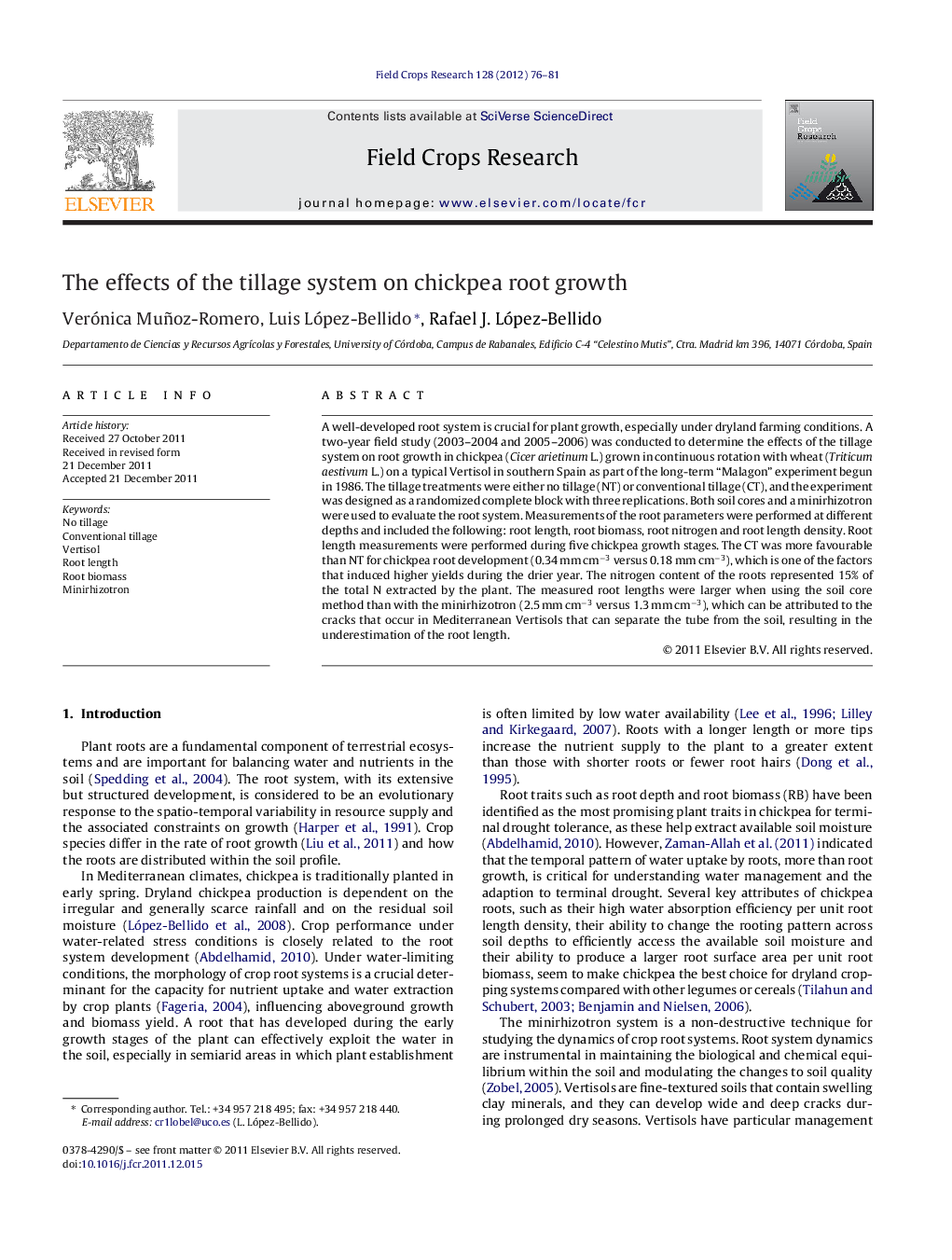| Article ID | Journal | Published Year | Pages | File Type |
|---|---|---|---|---|
| 4510657 | Field Crops Research | 2012 | 6 Pages |
A well-developed root system is crucial for plant growth, especially under dryland farming conditions. A two-year field study (2003–2004 and 2005–2006) was conducted to determine the effects of the tillage system on root growth in chickpea (Cicer arietinum L.) grown in continuous rotation with wheat (Triticum aestivum L.) on a typical Vertisol in southern Spain as part of the long-term “Malagon” experiment begun in 1986. The tillage treatments were either no tillage (NT) or conventional tillage (CT), and the experiment was designed as a randomized complete block with three replications. Both soil cores and a minirhizotron were used to evaluate the root system. Measurements of the root parameters were performed at different depths and included the following: root length, root biomass, root nitrogen and root length density. Root length measurements were performed during five chickpea growth stages. The CT was more favourable than NT for chickpea root development (0.34 mm cm−3 versus 0.18 mm cm−3), which is one of the factors that induced higher yields during the drier year. The nitrogen content of the roots represented 15% of the total N extracted by the plant. The measured root lengths were larger when using the soil core method than with the minirhizotron (2.5 mm cm−3 versus 1.3 mm cm−3), which can be attributed to the cracks that occur in Mediterranean Vertisols that can separate the tube from the soil, resulting in the underestimation of the root length.
► The conventional tillage was more favourable than no-tillage for chickpea root development. ► The total root length of chickpea was higher in wet years. ► The concentration of roots was higher in deeper soil layers in dry years. ► The root nitrogen contributed 15% of the total N extracted by the chickpea plant. ► The root:shoot biomass ratio increased both when the year was dry and under no-tillage.
